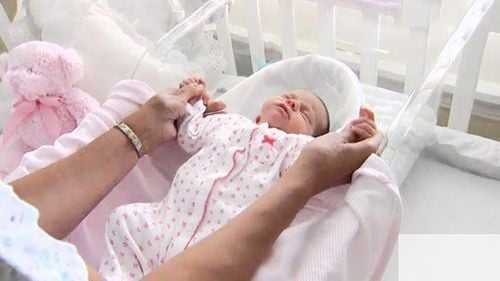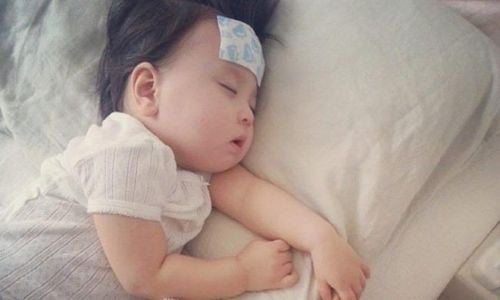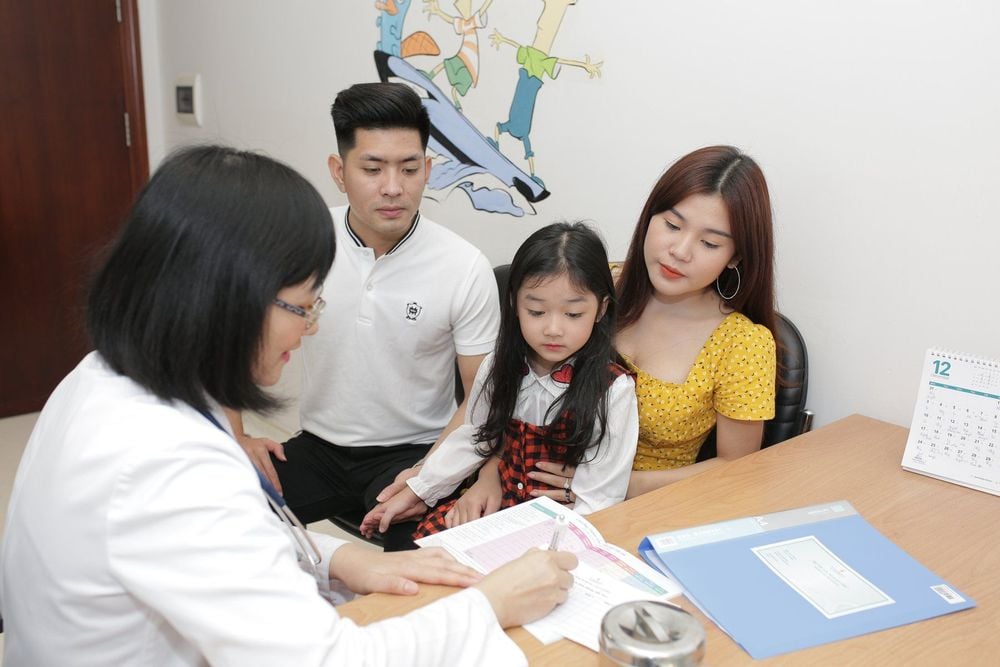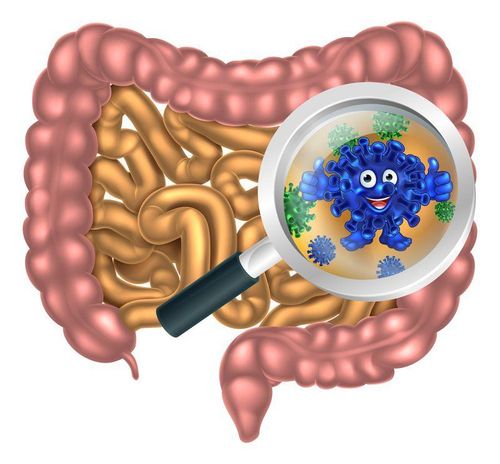This is an automatically translated article.
The article was written by Doctor Dam Thi Quynh - Pediatric Center - Vinmec Times City International General HospitalFebrile seizures occur in about 3% of children. The disease is common in infants and young children, from 3 months to 5 years old. Illness associated with fever but no evidence of CNS infection or another identified cause such as metabolic disorder or prior nonfebrile seizures.
1. Febrile convulsions usually manifest as generalized convulsions (spasms - convulsions or convulsions)
Febrile seizures often occur early, most seizures are generalized, bilateral, only 15% of cases are local: 80% of seizures, 14% of cases are tonic, 6 % is a loss of tone. Based on the severity of the disease, there are 3 basic clinical forms: simple febrile seizures, complex febrile seizures, and febrile status epilepticus.
Simple febrile seizures: seizure duration < 15 minutes, no local neurological signs and no second seizure. The disease is usually 90% cured without leaving any sequelae. Complex febrile convulsion: A complex febrile seizure is a febrile seizure with one of the following: seizure duration > 15 minutes, partial motor seizures, or following Todd's paralysis, above a seizure in 24 hours, neurological status is not normal, parents, brothers have convulsions without fever. In patients with two or more of these signs after the age of 7 years, about 6% of cases of epilepsy. The Mayo Clinic found that about 7% of complicated febrile seizures will have neurological deterioration and progress to epilepsy, this rate is 2.5% of children with seizures without the above signs. Febrile status epilepticus: The majority of patients resolve spontaneously, but episodic seizures and febrile status epilepticus are not uncommon. Many reports have shown that when febrile status epilepticus occurs, brain necrosis or death occurs. Some young children have hemiplegia followed by weakness or hemiplegia, which develops into spastic paralysis and partial motor seizures.

Co giật do sốt thường biểu hiện co giật toàn thể
2. Why are children prone to convulsions when they have a high fever?
High fever often causes convulsions in children from 6 months to 6 years old because the child's brain has not yet fully developed and is sensitive to temperature fluctuations in the body. Therefore, a high fever can stimulate a child's brain and cause a child to have a seizure. However, not all children have a seizure when they have a high fever.
Causes of febrile seizures are many, including infections: viral infections, bacterial infections or post-vaccination conditions can also cause a child to have a febrile convulsion. In addition, febrile seizures in children often have a familial factor. It is possible that the family has had a family member who had such a febrile convulsion at a young age such as father, mother, brother, sister...
However, until now, almost no one knows why children have convulsions. convulsions with fever. Some speculate that the trigger for convulsions in children is a chemical in the body rather than a fever.
3. First aid when a child has a seizure?
Put the child to lie down on the bed or a flat, cool place, avoid hard objects, sharp objects. Put the child on his side to avoid vomiting, vomit will enter the respiratory tract. Let the baby lie down, loosen the clothes. Do not hug the baby and give fever-reducing medicine, but should put anal fever-reducing medicine when the fever is over 38 degrees Celsius. Do not let the baby bite or stuff anything in the baby's mouth for fear that the baby will bite his tongue. Should put a soft cloth in the child's mouth. Wipe the baby's body with warm water, armpits to extremities. Measure the length of time your baby has a seizure. Quickly take the child to the emergency room for early treatment to prevent recurrent seizures.

Cha mẹ nên đặt trẻ nằm nghiêng sang một bên để tránh trường hợp trẻ nôn
4. What cases need to be hospitalized?
Take your child to the hospital or call 911 if any of the following occur:
Your baby has a seizure for the first time. The seizure lasted more than 10 minutes and showed no sign of stopping. You suspect a seizure is caused by a serious medical condition, such as meningitis. The baby has breathing problems such as difficulty breathing.
5. Prevention of febrile seizures in children
When the child has a fever, take the child to the doctor for early treatment, detect the cause of the fever and prevent convulsions.
Give the baby more water to drink or feed more often; Drink electrolyte water (oresol), orange juice, lemon to rehydrate and increase resistance for children. Take off clothes, put on cool clothes, do not warm or cover the baby. Place the child in a cool, clean place. Monitor baby's temperature regularly by thermocouple; Wipe the child's body with warm water, use fever-reducing medicine when the body temperature is over 38.5 degrees Celsius; Give children easy-to-eat liquid foods: porridge, milk... or foods they like to eat to recover. High fever and convulsions are not an uncommon phenomenon in children. The level of danger depends on the cause of the seizure. For benign febrile febrile seizures in children, febrile seizures are usually self-limited (usually about 2-5 minutes), leaving no lasting sequelae.
After 5 years of age, febrile seizures in children will go away on their own. However, convulsions accompanied by fever can be a sign of some serious infections such as meningitis, encephalitis... Therefore, when a child has a febrile seizure, they should be taken to a reputable facility. for a thorough examination.

Khi trẻ xuất hiện bất thường, cha mẹ cần đưa trẻ đến gặp bác sĩ để kịp thời điều trị
For children to be healthy and develop well, it is necessary to have a nutritious diet in terms of quantity and quality balance. If children are not provided with adequate and balanced nutrients, it will lead to diseases of excess or lack of nutrients, which adversely affect the comprehensive development of children in terms of physical, mental and motor skills.
Children who do not eat properly are at risk of micro-mineral deficiency causing anorexia, growth retardation, malabsorption,... If they notice the above signs, parents should supplement their children with products. The supplement contains lysine, essential micro-minerals and vitamins such as zinc, chromium, selenium, and B vitamins to help fully meet the nutritional needs of children. At the same time, these essential vitamins also support digestion, enhance nutrient absorption, help improve anorexia, and help children eat well.
Parents can learn more:
Signs of zinc deficiency in children
Micronutrient deficiency and failure to gain weight in children
Please regularly visit Vinmec.com website and update useful information to take care of your child. Take care of the baby and the whole family.














